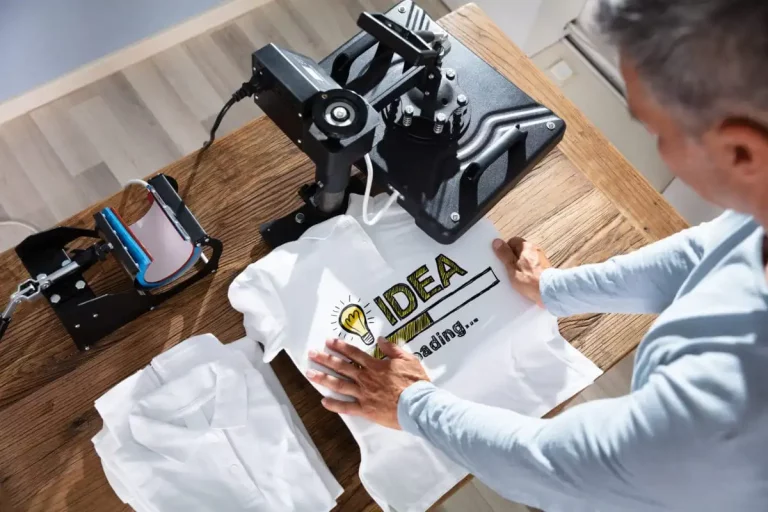Screen Printing Uncovered: Every Little Thing You Required to Learn About T-Shirt and Garment Printing Techniques
If you have actually ever wondered how those dynamic styles wind up on your favorite t-shirts, you're in the right place. Screen printing is an interesting technique that combines art with strategy, offering limitless opportunities for creative thinking. Comprehending the fundamentals, from tools to ink options, can considerably impact your results. Prepared to explore the crucial components that make display printing an art form? Allow's reveal the information that can raise your jobs.
The Fundamentals of Display Printing: How It Works
When you plunge right into display printing, you'll discover it's both a science and an art. At its core, display printing entails creating a pattern, or screen, that permits ink to pass with only in specific locations (screen printing kit). You start by picking your style and preparing your display with a light-sensitive emulsion. Once you subject this emulsion to light, it solidifies, leaving your design as an adverse room.
Next, you'll mix your inks and prepare your printing surface. Setting the screen over the material, then utilize a squeegee to press ink through the screen onto the garment. This process needs accuracy, as you desire clear, lively prints. After printing, you'll cure the ink with warm, ensuring it follows the material and lasts via laundries. Each step is necessary, and grasping them will boost your screen printing abilities, transforming basic garments into unique, meaningful items.
Kinds Of Screen Printing Methods
When you grasp the essentials of screen printing, it's time to check out the different methods that can boost your layouts. One popular method is standard display printing, where ink is pressed via a stenciled display. This technique is excellent for vibrant, vibrant colors. There's water-based ink printing, which offers a softer feel and is eco-friendly, but it requires a different approach to treating.
One more choice is plastisol printing, recognized for its durability and dazzling colors, making it a favored for numerous brand names. Experiment with halftone printing to produce slope impacts and intricate layouts.
Crucial Devices for Display Printing
To attain spectacular results in screen printing, having the ideal tools is fundamental. You'll require a durable screen printing frame, which holds the mesh that transfers your style onto the garment. Next off, invest in top quality mops; these are essential for applying ink uniformly across the screen.
Selecting the Right Inks and Products
When selecting inks and products for screen printing, you require to consider the kind of ink that functions finest for your project. Think regarding textile compatibility to assure your styles look last and fantastic long. Also, discover environment-friendly ink choices to make your printing process more sustainable.
Kinds of Screen Inks
Choosing the ideal screen ink is important for attaining vibrant, long lasting prints that fulfill your project's requirements. There are numerous kinds of screen inks to analyze. Specialized inks, such as glow-in-the-dark or metallic, can include one-of-a-kind effects to your designs.

Material Compatibility Factors To Consider
Comprehending fabric compatibility is crucial for achieving high-grade display prints, especially considering that different materials react distinctively to various inks. Constantly test your inks on example material to guarantee they stick effectively and preserve color integrity. Additionally, maintain in mind that material weight and texture can affect the last end result, so picking the appropriate ink and product combination is essential for your task's success.
Eco-Friendly Ink Options
Environmentally friendly inks are coming to be a prominent selection for display printers who wish to decrease their environmental effect while keeping high quality. When picking inks, think about water-based inks, which are much less harmful and much easier to cleanse up compared to traditional solvents. These inks bond well with fabrics, delivering dynamic results without poisonous chemicals. You might additionally explore eco-solvent inks that make use of fewer unstable natural substances (VOCs), making them a much safer alternative for both your health and the planet.
Furthermore, try to find inks made from eco-friendly resources, such as soy or vegetable-based options. By picking the best inks and materials, you'll not just develop spectacular designs however also add to a much more sustainable printing process. Make the button, and your prints will certainly show your commitment to the atmosphere!
Preparing Your Layout for Screen Printing

Submit Format Demands
To guarantee your style looks sharp and vibrant on textile, you'll need to pay close interest to submit format demands for display printing. Start with vector documents like AI or EPS, as they can be scaled without losing top quality. If you utilize raster photos, go with high-resolution documents, such as TIFF or PNG, ideally at 300 DPI. Stay clear of utilizing JPEGs, as they can shed clarity when resized. Make sure your style has a clear background to stop unwanted white sides on your prints. Finally, maintain color settings in mind; CMYK is typical for screen printing, so convert your RGB develops appropriately. By complying with these standards, you'll set your art work up for an effective print.
Color Separation Methods
Shade separation is an important action in preparing your style for display printing, and mastering it can greatly enhance your print quality. You'll need to damage your layout into private colors, as each shade calls for a different screen throughout printing. Beginning by identifying all the shades in your style and produce layers each. You can use software application like Adobe Photoshop or Illustrator to isolate and separate shades efficiently. Be certain to save each layer as a separate data, usually in a layout like TIFF or PSD. This precision not just guarantees precise color depiction but also simplifies the printing process. By paying interest to color separation, you'll attain expert and dynamic cause your screen-printed garments.
Resolution and Dimension
Achieving the very best lead to screen printing starts with ensuring your layout has the right resolution and dimension. Ideally, your artwork needs to go to least 300 DPI (dots per inch) for sharp, clear prints. Your final item might look unprofessional and pixelated. if you use lower why not look here resolution.
When it comes to size, take into consideration the measurements of your print area. Design your artwork to match the last print dimension, ideally producing it in the actual dimensions you'll be publishing. In this manner, you'll stay clear of any type of unexpected scaling issues.
Always examine your layout in both vector and raster layouts. Vector graphics can be scaled without shedding high quality, making them excellent for display printing. Preparing appropriately will guarantee your style looks incredible on every garment!
Step-by-Step Display Printing Process
Display printing is a dynamic procedure that allows you to develop dynamic designs on various surface areas. To get going, you'll need a screen, solution, and your selected ink. First, prepare your display by cleansing it completely. Next, apply the emulsion uniformly and allow it completely dry in a dark area. When completely dry, subject your screen to light with your style positioned on it, which will certainly solidify the solution where the light hits, producing a pattern - screen printing kit.
Pour ink onto the display and use a squeegee to push the ink via the stencil onto the textile. Raise the display meticulously and let the print dry. You have actually successfully display printed your design.
Tips for Successful Display Printing Projects
While you're diving right into your screen printing tasks, keep in mind that preparation is essential to success. Beginning by collecting all your materials-- inks, squeegees, garments, and screens. A tidy work area aids avoid undesirable mistakes, so clean before you start.
Next, confirm your artwork is high-resolution and properly sized for your garment. Check your screen for appropriate direct exposure and clean it completely to avoid spots. When blending your inks, follow the supplier's guidelines to achieve the ideal uniformity.
During printing, use even stress with your squeegee for consistent outcomes. Don't hurry; take your time to validate each print fulfills your requirements. After printing, let your garments dry entirely prior to managing or packaging them.
Lastly, constantly keep a sample of your benefit future recommendation. In this manner, you can analyze your progress and improve your techniques gradually. Satisfied printing!

Regularly Asked Inquiries
Just how Lengthy Does It Require To Establish up a Display Printing Work?
Establishing up a display printing task usually takes about thirty minutes to an hour. You'll prepare the screens, mix inks, and adjust journalism. The look at here now moment varies based on complexity and experience, so stay organized!
Can I Print on Various Textile Enters Utilizing the Same Technique?
Yes, you can publish on different fabric kinds using the same strategy, yet you'll need to readjust your inks and settings. Some textiles take in ink in a different way, so exploring assurances the very best outcomes for each product.
What Prevail Errors to Avoid in Screen Printing?
When screen printing, prevent common mistakes like using the wrong ink, ignoring appropriate direct exposure times, or avoiding pre-press checks. Constantly examine your setup and maintain clean screens to ensure high quality outcomes each time.
Exactly How Can I Correctly Tidy and Preserve My Screen Printing Equipment?
To effectively clean and keep your display printing equipment, you need to on a regular basis wash displays with appropriate solvents, examine squeegees for wear, and assure all tools are saved completely dry and dust-free. Uniformity stops pricey repair work and boosts performance.
Is Screen Printing Environmentally Pleasant Compared to Various Other Methods?
Display printing can be much more eco friendly than various other methods, specifically if you make use of water-based inks and eco-conscious materials. By picking sustainable products and practices, you lower waste and decrease your effect on the world.
Screen Printing Uncovered: Whatever You Need to Know Regarding Tee and Garment Printing Strategies
At its core, display printing includes creating a pattern, or screen, that allows ink to pass through only in certain locations. Placement the display over the textile, after that make use of a squeegee to push ink through the screen onto the garment. One prominent technique is typical screen printing, where ink is pushed through a stenciled screen.When selecting inks and products for screen printing, you require to take right into account the kind of ink that works finest for your job.